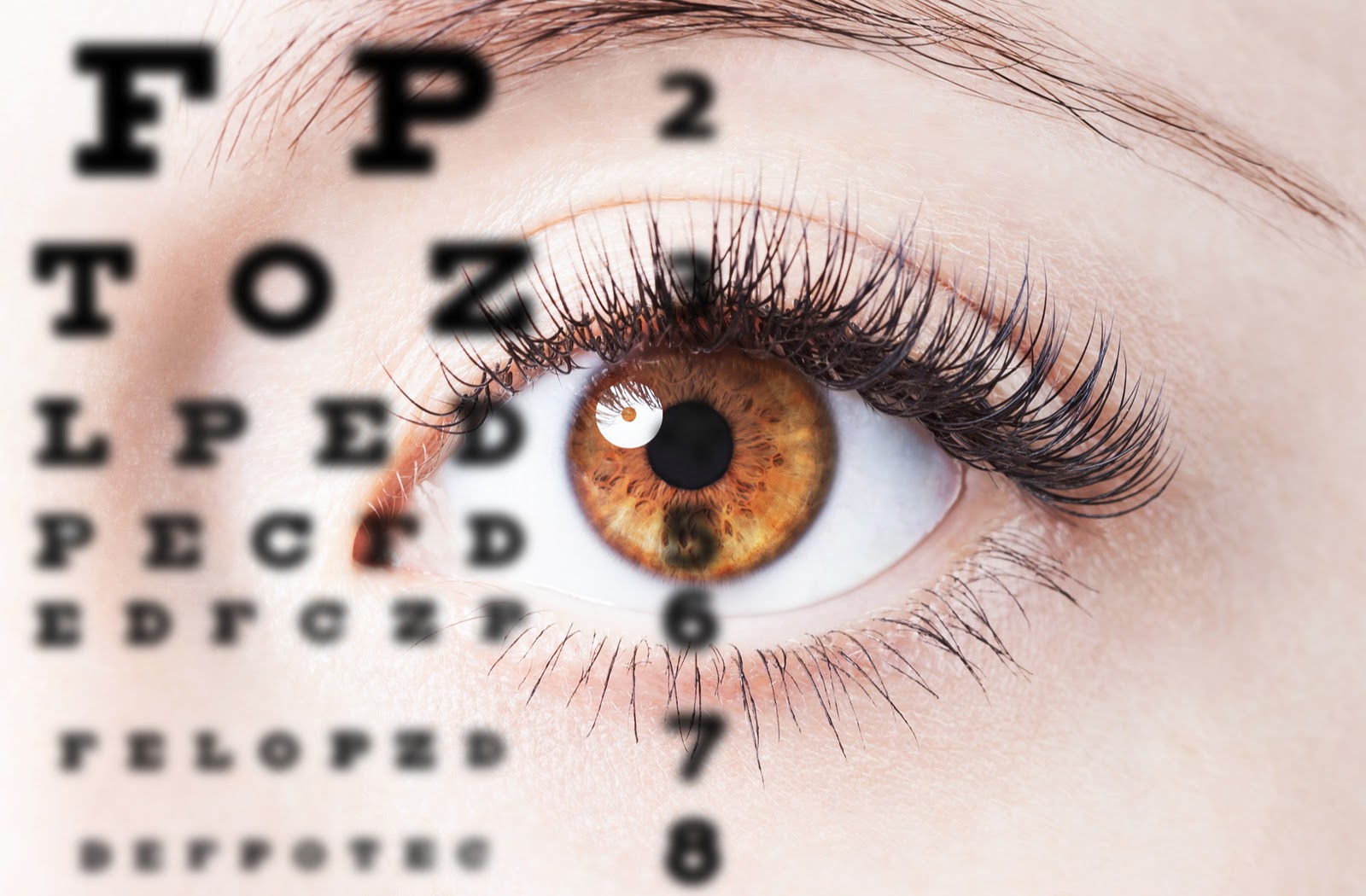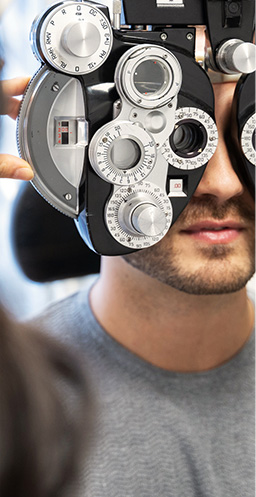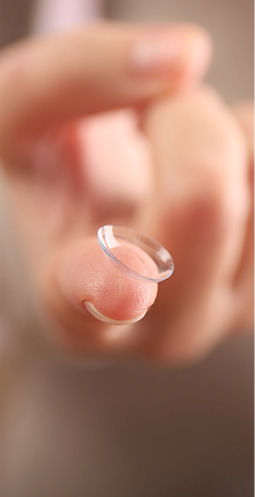Have you ever wondered how your optometrist determines your eyeglass or contact lens prescription?
The science of assessing and correcting vision requires a careful and precise process.
Whether you’re nearsighted, farsighted, or dealing with astigmatism, optometrists employ a series of tests to accurately prescribe lenses that help provide clear and comfortable vision.
The Importance of Vision Correction
The number of Canadians who need vision correction is rising. About 74% of people require eyeglasses, contacts, or laser eye surgery to see clearly.
Vision problems occur when light entering the eye doesn’t focus properly on the retina, which can lead to blurry or distorted vision. Prescription eyeglasses or contact lenses work by altering the way light enters the eye, ensuring that it converges onto the retina accurately, resulting in clearer vision.
The Prescription Process
Your eye doctor can follow a process of multiple tests to assess your vision and determine your prescription.
Visual Acuity Test
Optometrists often use a Snellen chart which consists of letters and numbers in varying sizes, to measure your visual acuity. You’ll read the characters from a distance, with each eye tested separately. This test helps identify the extent of your refractive error, which is the most common of vision problems.
Retinoscopy
Retinoscopy involves shining a light into your eye and observing how it reflects off your retina. The optometrist uses a handheld instrument called a retinoscope to determine the direction and degree of refractive error. The optometrist will estimate your initial prescription by adjusting the lenses in front of your eyes and analyzing the light patterns. Retinoscopy is considered a method of objective refraction, as it does not require any input from the patient. It does not depend on any answers from the patient. The patient simply has to look straight ahead while the test is being performed. This method can be used as a starting point and then refined using subjective refraction. This method is also used to determine the prescription for young children who may be too young to perform a subjective refraction.
Autorefractor
Another method of objective refraction is with the use of an autorefractor. This automated instrument measures how light enters your eye and reflects off your retina, providing the optometrist with data to determine your prescription. This test only takes a few seconds to perform and is typically done by a technician before the patient sees the optometrist. This is typically used as a starting point, which the optometrist then further refines into the final prescription using the method of subjective refraction.
Subjective Refraction
Most people are familiar with subjective refraction—the “which is better, 1 or 2?” routine. The optometrist places a phoropter (that large multi-lens instrument you peer through) in front of your eyes and switches between the different lenses. You’ll compare the clarity of the images presented. Based on your responses, the optometrist fine-tunes the prescription until you achieve clear and comfortable vision.
Near Vision Testing
For individuals over 40 or those who experience presbyopia (difficulty focusing on close objects), conducting additional testing to determine the appropriate prescription for reading or close-up work is necessary. It often involves assessing your ability to read the small print at a comfortable distance. This can help fine tune the prescription for reading glasses, bifocals or progressive lenses.
Binocular Vision Testing
Making sure that both eyes work together seamlessly is crucial. Tests such as the cover test, where the eye doctor gets you to cover one eye at a time, help assess eye alignment and coordination. Other binocular testing done behind the phoropter to determine how well the eyes work together includes the Von Graefe test. This is where the doctor uses horizontal and vertical prisms to determine alignment between the two eyes. The optometrist evaluates how well your eyes team up to provide clear and comfortable vision.
Pupil Testing
The optometrist will also assess your pupil reflexes using a light such as a penlight or an ophthalmoscope. Here, the optometrist is looking to see whether the pupils are equal in size, whether they react to light and accommodation (PERRLA). This can be a screening for certain neurological diseases.
Eye Health Evaluation
A comprehensive eye examination also includes a detailed assessment of the health of your eyes. The optometrist uses different tools to assess the health of the eyes including a slit lamp biomicroscope, slit lamp lenses and binocular indirect ophthalmoscope. An important part of eye health testing can also include advanced imaging including OCT imaging) which can detect signs of eye disease even in its early stages.
How to Read Your Glasses Prescription
Now that we’ve delved into how optometrists determine your prescription, it’s time to empower you with the knowledge to read and understand your eyeglasses or contact lenses prescription. The seemingly cryptic combination of numbers and abbreviations on your prescription can provide valuable insights into your vision needs. Let’s decode the components of a typical glasses prescription:
- OD and OS: These abbreviations stand for “oculus dexter” (right eye) and “oculus sinister” (left eye), respectively. Your prescription will usually list your right eye’s measurements first, followed by your left eye’s measurements. Occasionally, “OU” (oculus uterque) might appear, indicating that the prescription applies to both eyes.
- Sphere (SPH): The sphere value indicates the main refractive correction needed for your eye. If the number is preceded by a minus sign (-), it indicates nearsightedness (myopia), meaning you have difficulty seeing distant objects. Conversely, if the number is preceded by a plus sign (+), it signifies farsightedness (hyperopia), which affects your ability to see up close. A high plus prescription can also affect distance vision, but it affects near vision to a greater extent. .
- Cylinder (CYL): If you have astigmatism, the cylinder value will be present. This indicates the degree of astigmatism present in your eye. Astigmatism occurs when the cornea or lens has an irregular curvature, causing blurred or distorted vision. An eye with no astigmatism has a lens and cornea combination that is shaped like a sphere such as the shape of a soccer ball. An eye with astigmatism has a lens and cornea combination shaped in an elliptical pattern, similar to an American football or an egg which leads to more than one point of focus at the back of the eye and results in distortion of vision. Therefore, a cylinder correction will be needed in the glasses prescription to properly focus the light onto the retina at the back of the eye. The cylinder value can be written either as a negative number or a positive number. The negative format is usually written by prescriptions from optometrists and is the standard used when making eyeglasses while a positive cylinder is sometimes used by ophthalmologists. A prescription written in a positive cylinder format can be changed to a standard negative cylinder format using a simple conversion.
- Axis: The axis accompanies the cylinder value and specifies the orientation of the cylindrical correction needed to address astigmatism. It is measured in degrees, ranging from 0 to 180.
- Add: The add power is used for the additional magnification required for near-vision activities like reading or using a computer. It’s always a positive value and is typically the same for both eyes. A prescription that indicates an “Add” power can be used to make single vision reading lenses, computer lenses or multifocal lenses such as bifocal lenses, progressive lenses or specialized task lenses.
- Prism: If there’s a prism value on your prescription, it means you have a problem with eye alignment, causing discomfort or double vision. The prism value helps opticians adjust your lenses to ensure both eyes work together harmoniously.
- Base: The base direction accompanies the prism value and indicates the orientation of the prism needed to correct the alignment issue. It can be specified as “Base In” (towards the nose) or “Base Out” (away from the nose) for horizontal alignment issues. “Base Up” and “Base Down” prism orientation is used for vertical eye alignement issues. Sometimes, both horizontal and vertical prisms are used in the same prescription in some complicated cases!
Remember that while the prescription provides crucial information, it’s equally important to consult your optometrist or optician for personalized recommendations based on your prescription and lifestyle.
Your Unique Vision
The process of determining your eyeglass or contact lens prescription is an intricate one, blending clinical expertise with advanced technology. The optometrists at Stoney Creek Eye Care use several tests, including visual acuity tests, retinoscopy, autorefractors, subjective refraction, and various others, to arrive at a precise prescription tailored to your unique vision needs. Just as importantly, your unique work and lifestyle needs will be explored to determine an ideal prescription that is custom tailored just for you! Find your best vision by booking an appointment today—as you embark on your eyewear journey, armed with a newfound understanding of your prescription. You can approach the world through a clearer, sharper lens—both literally and figuratively









